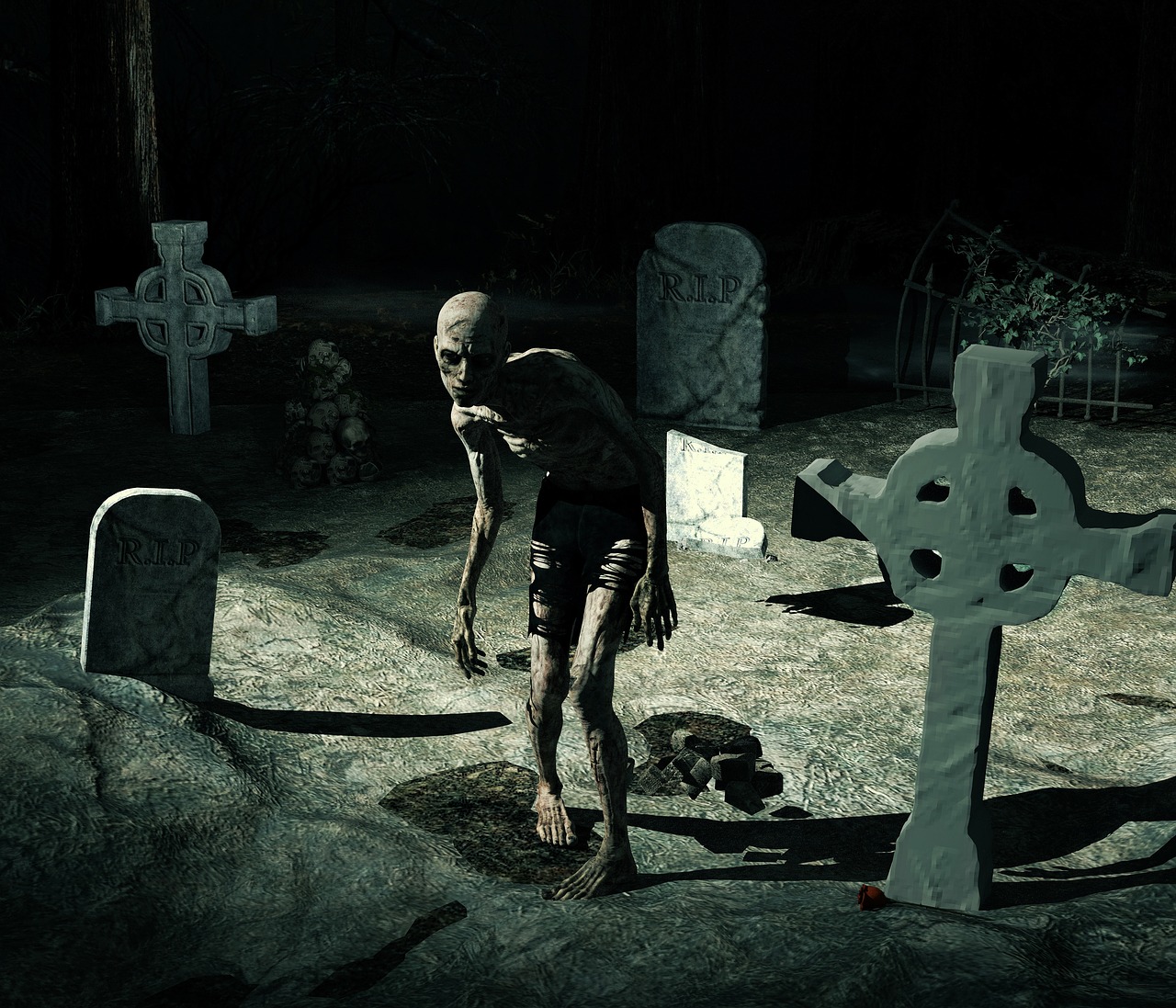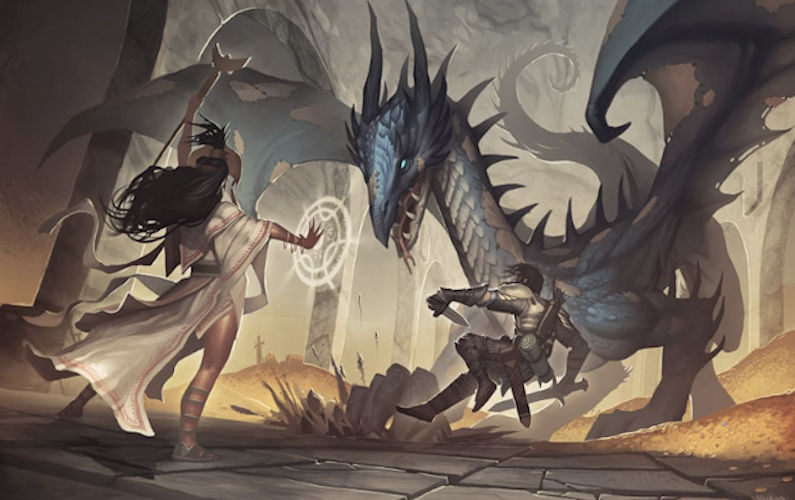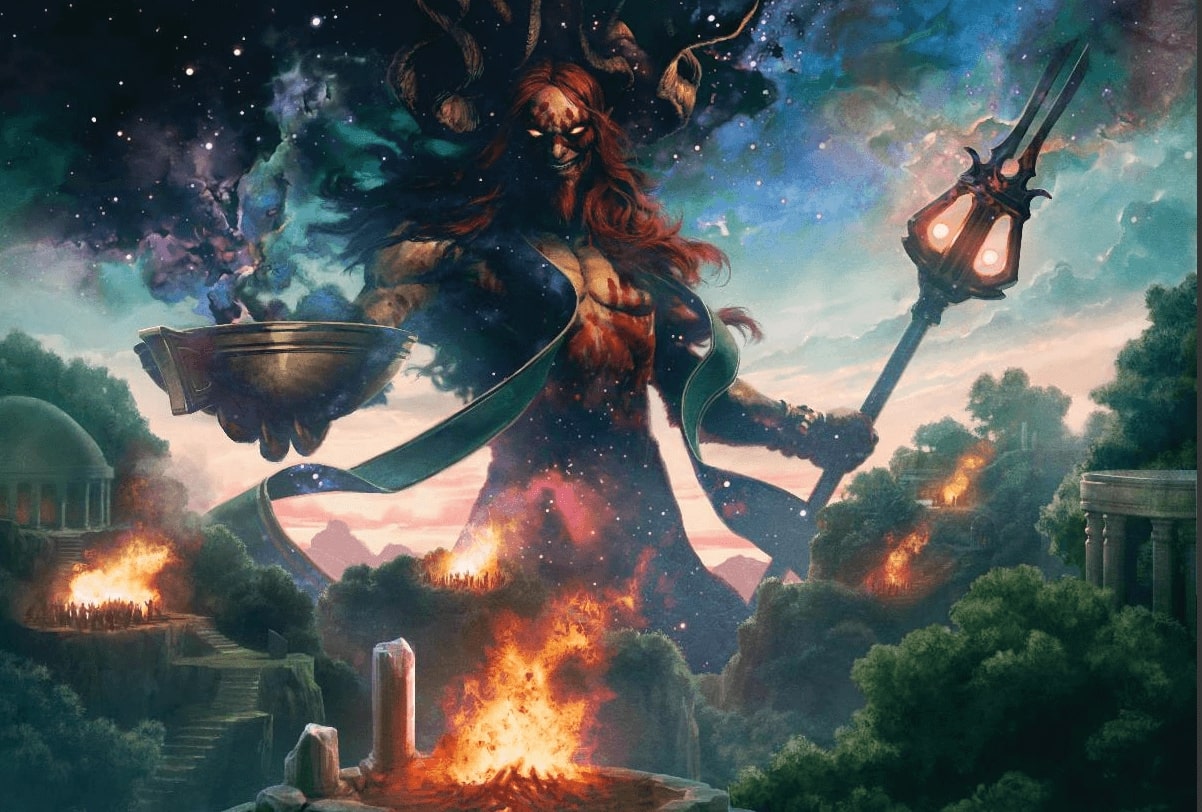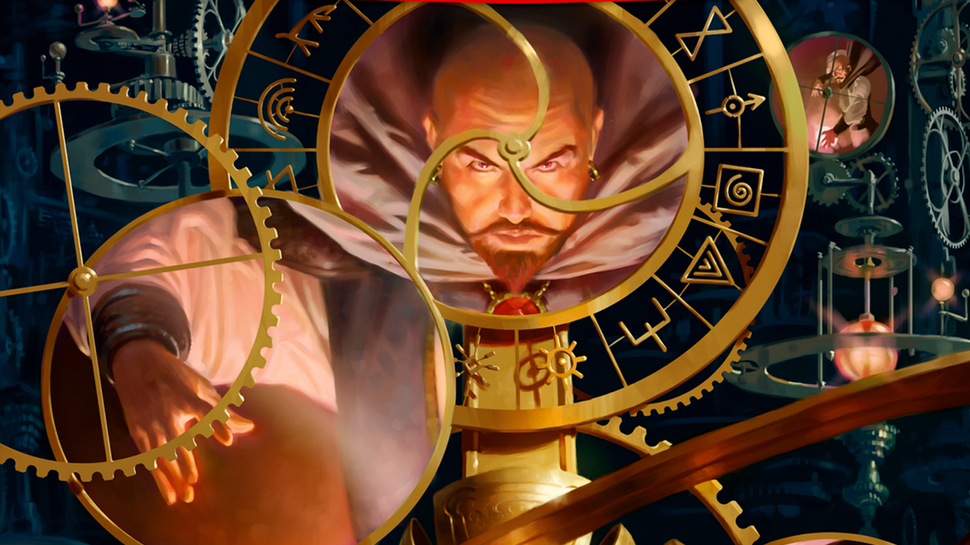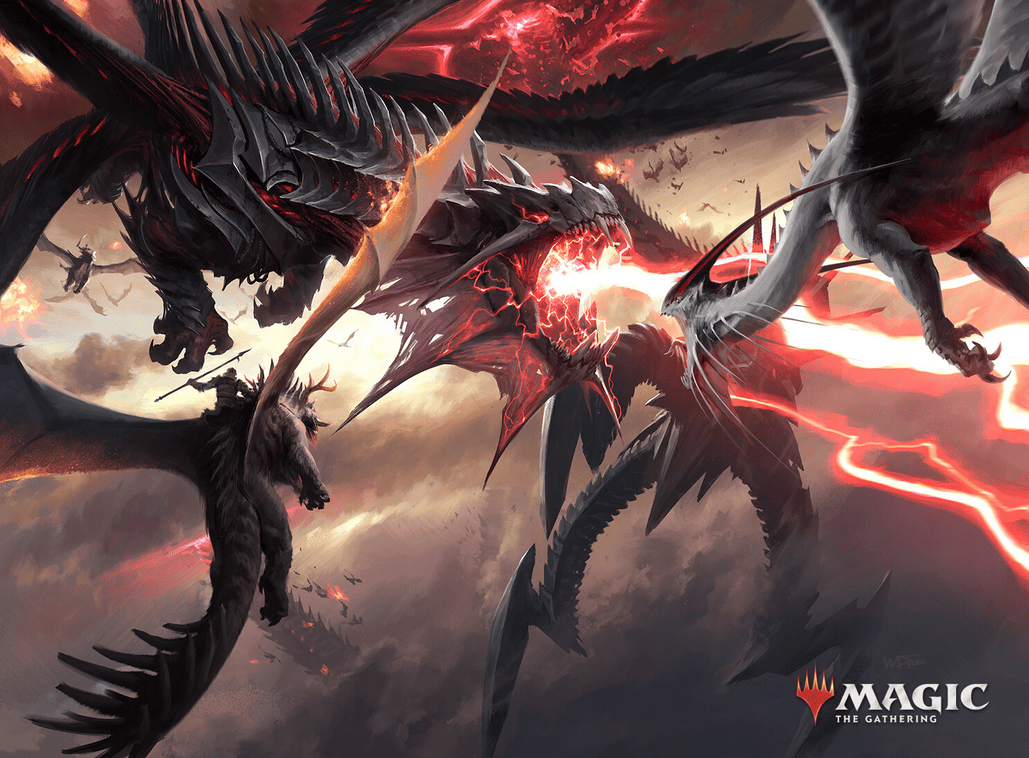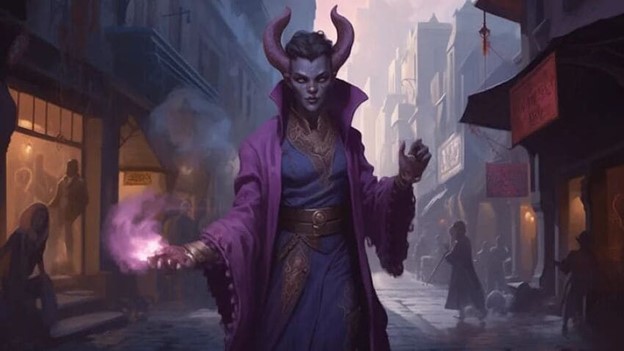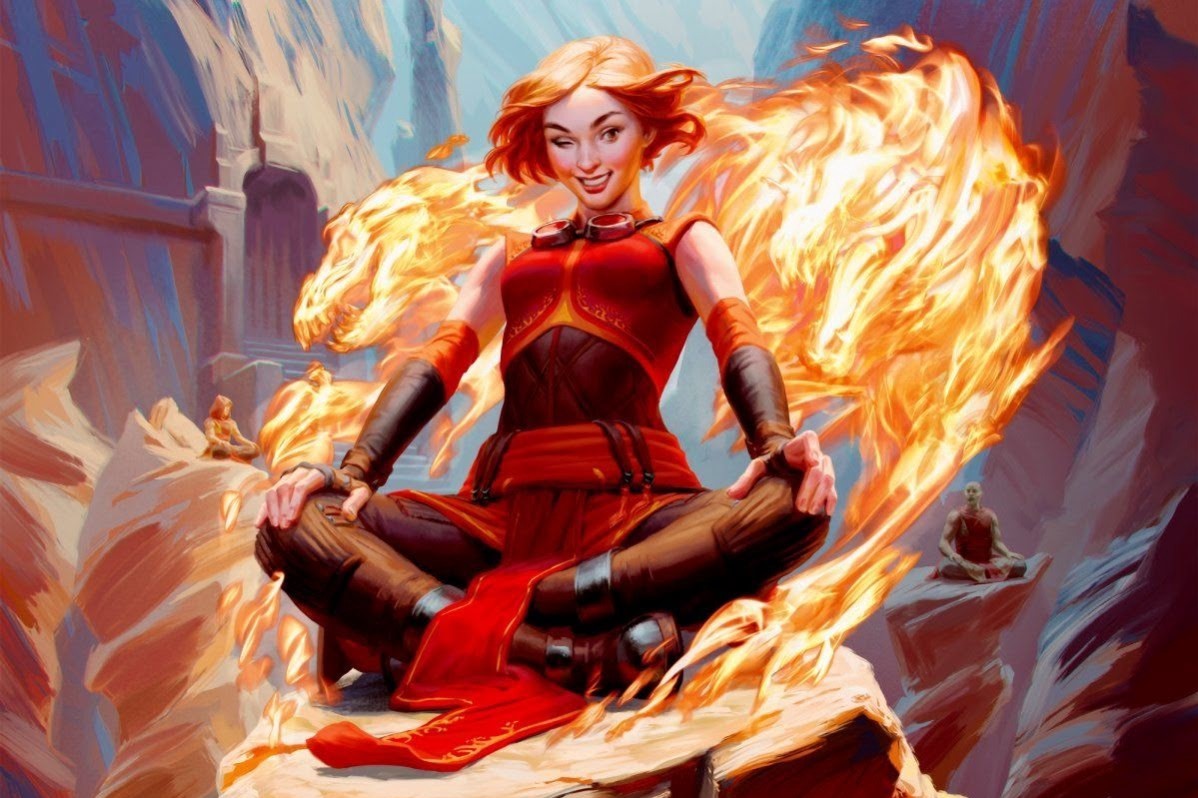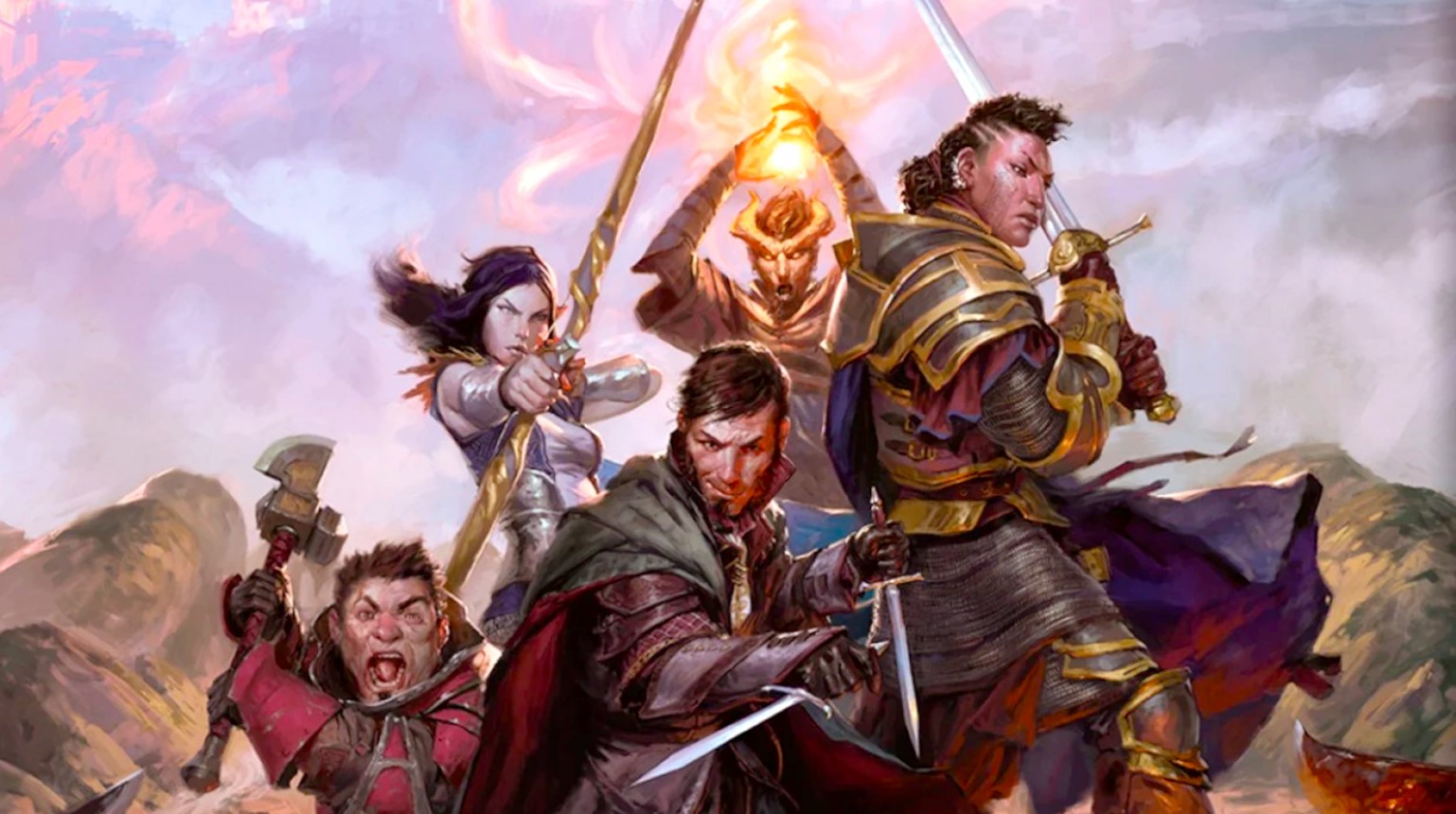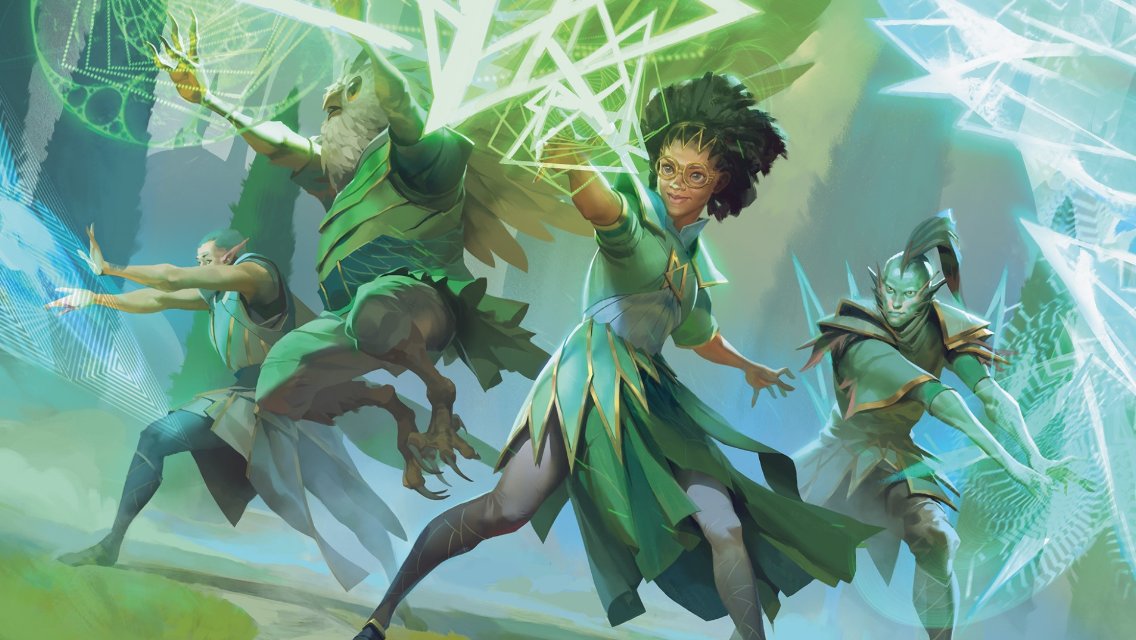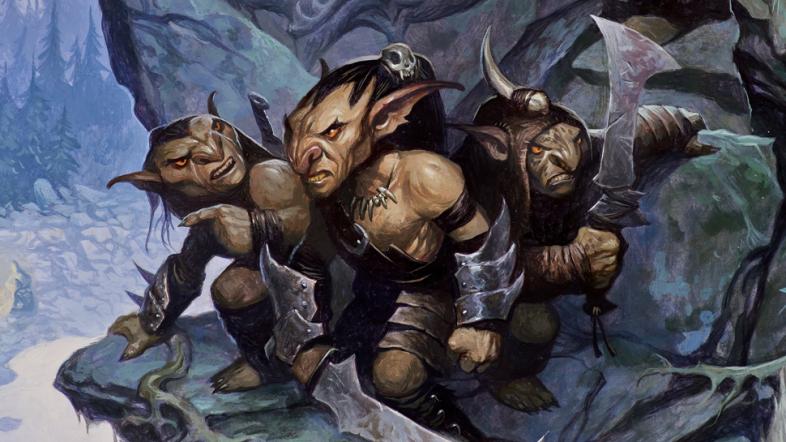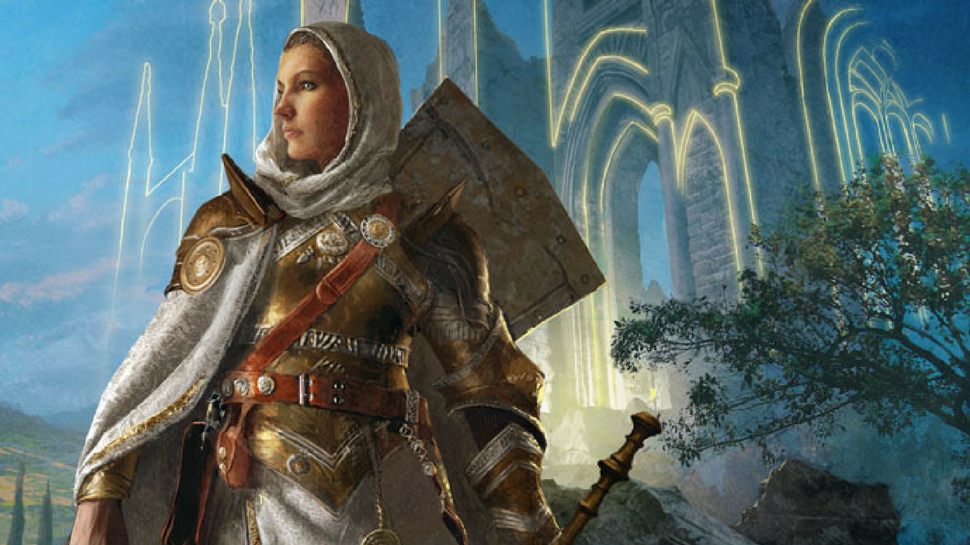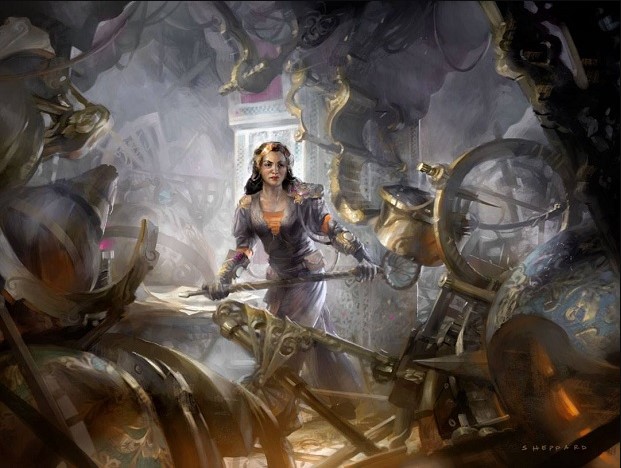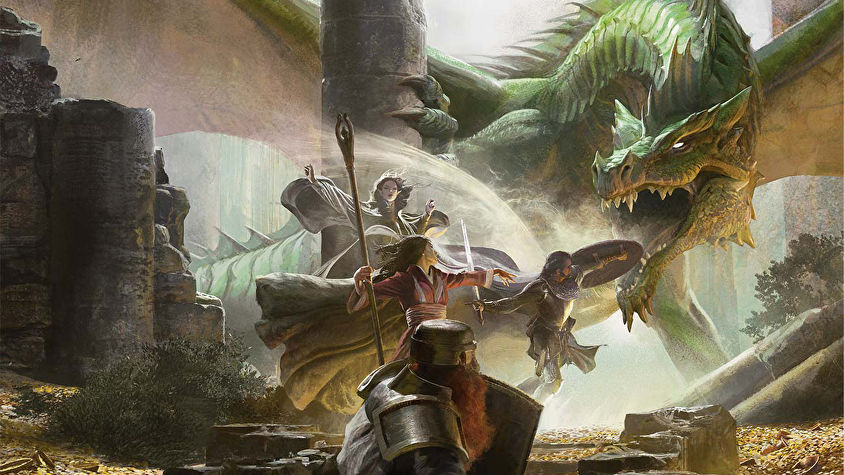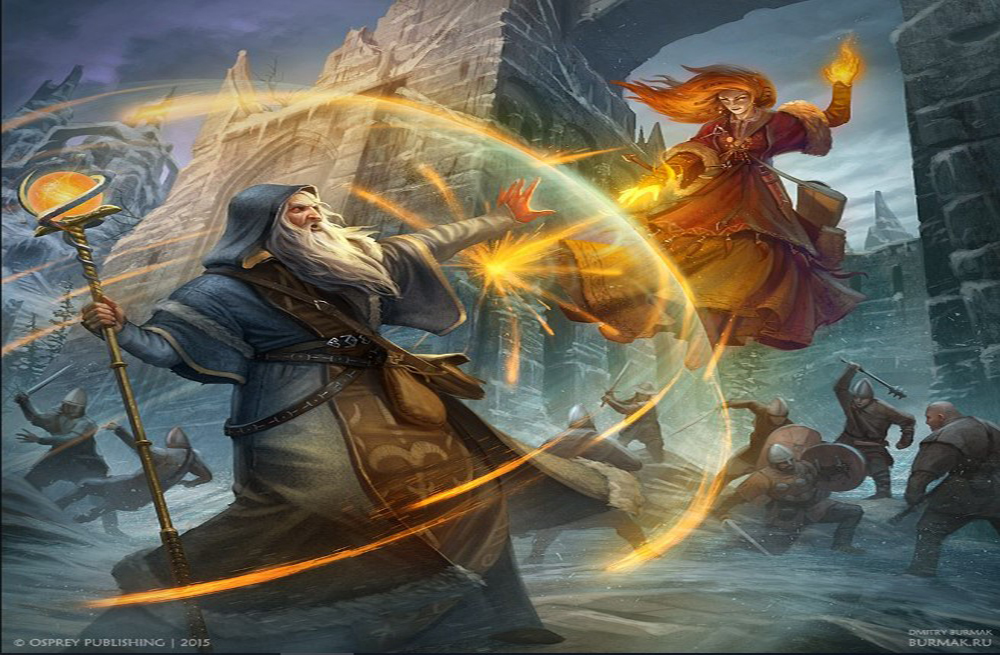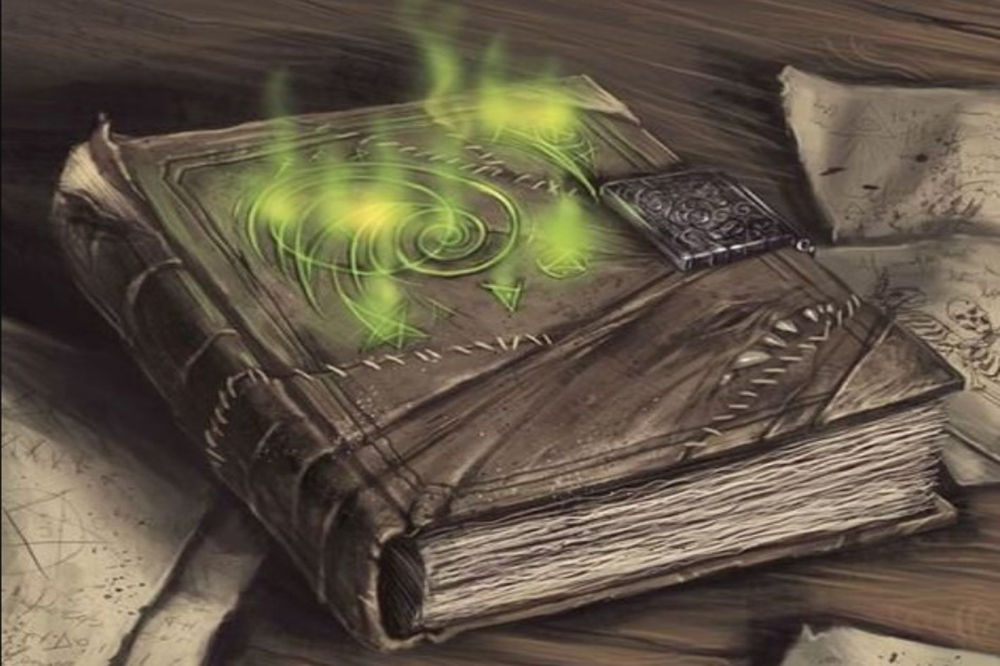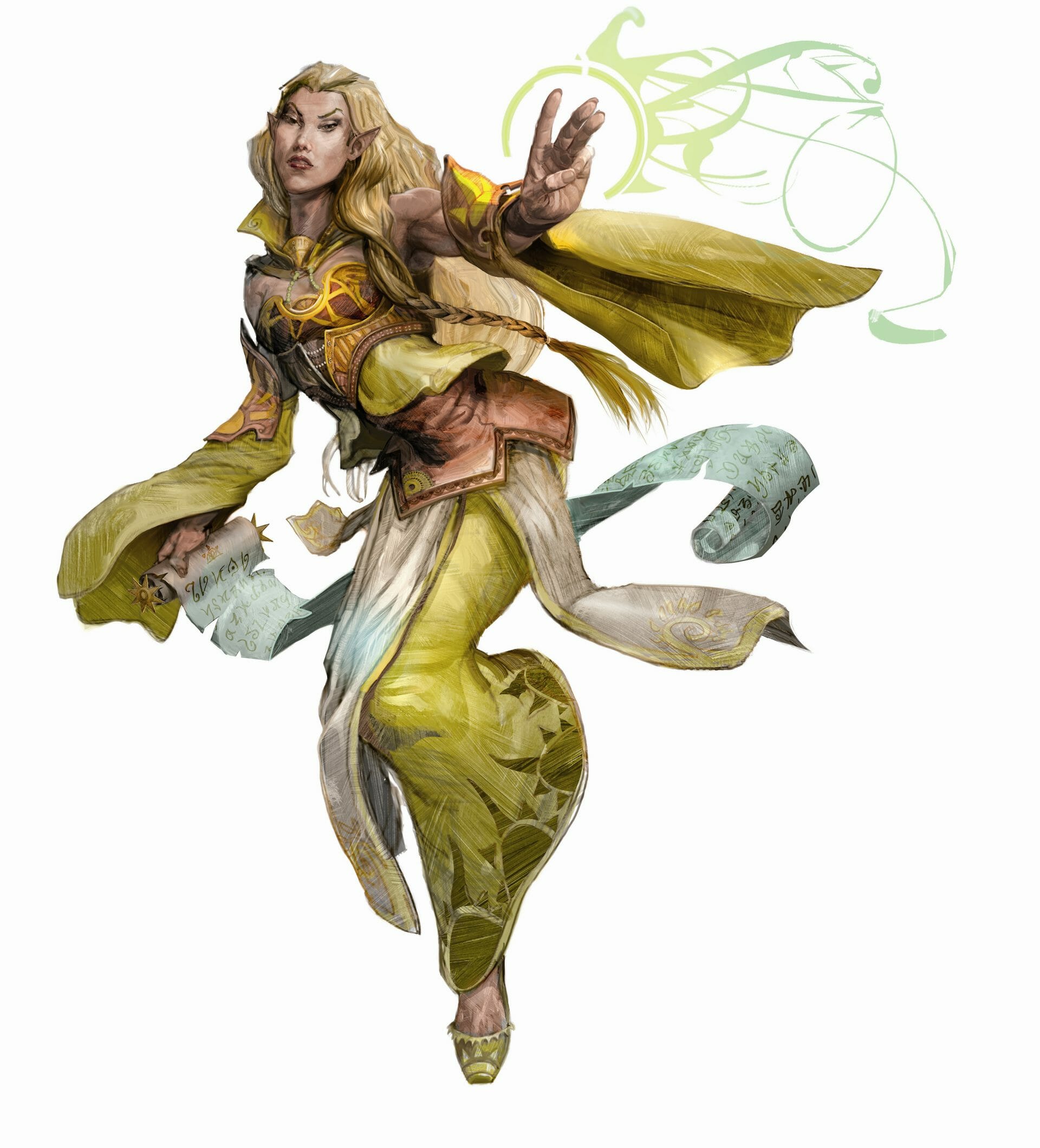![[Top 5] D&D Best Rogue Multiclass Builds That Are Powerful D&D Best Rogue Builds](/sites/default/files/styles/responsive_image_600xauto/public/2024-04/top_5_dd_rogue_multiclass_builds_that_are_powerful_rogue_1.jpg.webp?itok=7Xjmhm4J)
Dungeons & Dragons allows gamers to live out their wildest fantasies alongside their friends. Be it battling hordes of vicious goblins or befriending an enigmatic wizard, the world of D&D is filled with endless, exciting possibilities.
In D&D, players must create a character through which they will experience the world and story. To do this, they must determine certain characteristics of their character, such as its race, class, and backstory. Players can be a charismatic bard, a brilliant wizard, or a powerful barbarian if they design their character right. One of the best ways to customize the finer aspects of character creation and optimize a build is through multiclassing.
What Is Multiclassing?
In D&D, multiclassing is when a character takes levels in two or more classes to gain access to specific features that they otherwise could not. Some of the most infamous multiclass builds include the Palalock (Paladin / Warlock) and Sorlock (Sorcerer / Warlock). By abusing some of the class features these builds gain access to, players have discovered ways to create truly overpowered characters with the right DM.
What Are the Advantages of Multiclassing?
Multiclassing has many advantages, as well as some drawbacks. To start with, multiclassing allows a character to synergize class features and create builds that are otherwise impossible. This allows a character to fill multiple party roles, which is especially useful in groups of only 2 or 3 players.
Multiclassing can also be used to expand the skill set of existing class features. For example, subclasses like the Arcane Trickster for the Rogue and Eldritch Knight for the Fighter can benefit from a Wizard multiclass, as those subclasses are heavily reliant on the Intelligence score which the Wizard also uses. This multiclass gives those subclasses, which traditionally have very limited spellcasting abilities, access to a larger spell list, more spell slots, and some class features that lend themselves to a more spellcasting-focused playstyle while still preserving their martial capabilities.
Multiclassing isn’t without its drawbacks, however. One of the biggest disadvantages of multiclassing is that it prevents characters from completely maxing out a class. A character can only gain 20 total levels. This means that if one takes 17 levels of one class and 3 levels of another, they will never achieve the powerful capstone feature granted by reaching level 20 in a single class.
Below, we outline some of the most powerful multiclass combinations for the Rogue class as well as the best level progression to ensure that players reach the most important levels in their build as fast as possible.
5. Swashbuckler Rogue / Swords Bard

"The best way to win a fight is to avoid it altogether." This is the mantra of every Bard in D&D.
Want the quintessential skill-monkey build? Go for a Rogue / Bard multiclass. Taking a 3-level dip into Bard gives the Rogue some very powerful benefits and, with the right subclass choices, synergizes perfectly with the Rogue’s base kit. This build will have you sweet-talking barmaids while dueling with fearsome foes simultaneously.
If built right, this multiclass can fill some of the most important roles in the party with ease. Taking 3 levels of Bard gives you expertise in 2 additional skills, on top of the 2 you get with 1 level of Rogue. It also gets you Jack of All Trades, which will give you half-proficiency in all skills you aren’t already proficient in. With this build, you will have proficiency in 7 skills and thieve’s tools, with expertise in 6 of those and half proficiency in everything else.
With all these proficiencies, this Rogue can fill its natural role as a sneaky martial striker, stealthing through the shadows and delivering powerful attacks from cover, while also daylighting as your party’s face. The Swashbuckler subclass benefits greatly from a high Charisma, so expertise in Stealth, Persuasion, Deception, Intimidation, and Insight will cover all of your bases, with some proficiencies left to spare.
Synergizing the Swashbuckler and College of Swords subclasses makes this build adept at jumping into the fray and dishing out massive damage with Sneak Attack while still keeping yourself protected with Defensive Flourish as you scurry away. I recommend using a Rapier and taking the Dueling fighting style to get that extra bit of damage. This can be paired with the High Elf race, granting you access to the Booming Blade cantrip which can be used to deal even more damage and punish your enemies for chasing after you. This truly is the ultimate hit-and-run build.
While being powerful matters in D&D, what is most important is whether or not this build is fun. Thankfully, this combination has that base covered too. This build’s impressive abilities as the party’s Face make it a blast to roleplay and the evasive hit-and-run tactics it employs makes combat feel fluid and dynamic without sacrificing power.
Playing this build will have you running around the battlefield, stabbing and pestering the enemy’s front and back lines while being almost impossible to retaliate against without a spellcaster. This multiclass combination is also capable of a more stealthy approach, giving you the tools you need to infiltrate an enemy’s base, plant incriminating evidence, or assassinate a corrupt noble without your foes being any the wiser.
So to sum-up, why is Swashbuckler Rogue / Swords Bard so good?
- Extremely versatile proficiencies (up to 7, with 6 of those having expertise and the rest of your skills having half-proficiency)
- Emphasis on Charisma makes this the perfect face
- Swashbuckler / College of Swords synergize to make a powerful hit-and-run duelist with insane burst-damage potential
Build details:
To start with, I would recommend taking 3 levels of Rogue, ending with choosing the Swashbuckler subclass. This grants you more proficiencies and gets you your core features faster. Next, you should take 3 levels of Bard and select the College of Swords subclass. This will finalize the core features of your build, and you can finish off with another 14 levels of Rogue.
For optimal performance in battle, you should take the High Elf race and choose the Booming Blade cantrip to maximize your hit-and-run abilities. Every attack you make should be done with Booming Blade for extra damage and debuffs on the enemy. Make sure you use the optional rules in Tasha’s Cauldron of Everything to change your race ability score increase from Intelligence to Constitution.
Your ability score spread should look like this if you use Point Buy:
STR: 8
DEX: 16
CON: 16
INT: 10
WIS: 10
CHA: 14
I recommend arming yourself with a Rapier and Studded Leather Armor. This way, you can take advantage of your Dueling fighting style and keep a free hand for any spellcasting you may need to do.
Rogue (Swashbuckler) 17 / Bard (Swords) 3
Rogue (Swashbuckler) Levels:
- Level 1 (Rogue 1) - Class Features: Expertise (Choose 2 skills to gain double proficiency. I recommend Stealth and Persuasion); Sneak Attack (1d6); Thieves’ Cant
- Level 2 (Rogue 2) - Class Feature: Cunning Action (Dash, Disengage, or Hide as Bonus Action)
- Level 3 (Rogue 3) - Class Features: Roguish Archetype (Choose Swashbuckler); Sneak Attack (3d6). Swashbuckler Features: Fancy Footwork (Don’t take opportunity attacks from a creature you hit with an attack); Rakish Audacity (Bonus to Initiative equal to Charisma modifier & new way to use Sneak Attack)
- Level 7 (Rogue 4) - Class Feature: Ability Score Improvement (Increase Dexterity by 2)
- Level 8 (Rogue 5) - Class Feature: Uncanny Dodge (Use your reaction to halve an attack’s damage against you)
- Level 9 (Rogue 6) - Class Feature: Expertise (Gain Expertise in 2 more skills. I recommend Thieves' Tools and Perception)
- Level 10 (Rogue 7) - Class Features: Evasion (Take half damage if you fail a Dexterity Saving Throw made to avoid an AOE effect, or no damage if you succeed); Sneak Attack (4d6)
- Level 11 (Rogue 8) - Class Feature: Ability Score Improvement (Increase Dexterity by 2)
- Level 12 (Rogue 9) - Class Feature: Sneak Attack (5d6). Swashbuckler Feature: Panache (Charm enemies on the battlefield with a Persuasion check, inflicting debuffs on them)
- Level 13 (Rogue 10) - Class Feature: Ability Score Improvement (Increase Charisma or Constitution by 2)
- Level 14 (Rogue 11) - Class Features: Reliable Talent (Cannot roll lower than 10 on ability checks that you are proficient in); Sneak Attack (6d6)
- Level 15 (Rogue 12) - Ability Score Improvement (Increase Charisma or Constitution by 2, or choose a Feat)
- Level 16 (Rogue 13) - Class Feature: Sneak Attack (7d6)
- Swashbuckler Feature: Elegant Maneuver (Use a Bonus Action to gain Advantage on Acrobatics or Athletics checks)
- Level 17 (Rogue 14) - Class Feature: Blindsense (Locate any Invisible creature within 10 feet)
- Level 18 (Rogue 15) - Class Features: Slippery Mind (Gain Proficiency in Wisdom Saving Throws); Sneak Attack (8d6)
- Level 19 (Rogue 16) - Class Feature: Ability Score Improvement (Increase Charisma or Constitution by 2, or choose a Feat)
- Level 20 (Rogue 17) - Class Feature: Sneak Attack (9d6). Swashbuckler Feature: Master Duelist (Reroll missed attacks with advantage once per long rest)
Bard (Swords) Levels:
- Level 4 (Bard 1) - Class Features: Spellcasting; Bardic Inspiration (1d6)
- Level 5 (Bard 2) - Class Features: Jack of All Trades (Gain half-proficiency in all skills you do not already have proficiency in); Song of Rest (Heal your allies by an additional 1d6 when they take a Short Rest)
- Level 6 (Bard 3) - Class Features: Bard College (Choose College of Swords); Expertise (Choose 2 skills to gain double proficiency. I recommend Intimidation and Deception). College of Swords Features: Bonus Proficiencies (Gain proficiency in Medium Armor and Scimitars. You can also use weapons as a Spellcasting Focus); Fighting Style (Choose a fighting style to gain benefits in combat. I recommend Dueling); Blade Flourish (Gain new ways to use your Bardic Inspiration, granting certain benefits in combat)
4. Swashbuckler Rogue / Draconic Bloodline Sorcerer
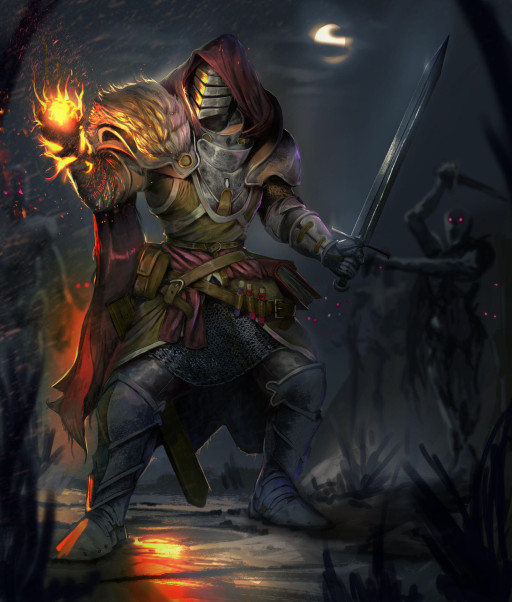
Why use a shield when you can burn your enemies before they can get close?
Do you want to be a powerhouse on the battlefield, tanking attacks from your foes while still slashing and dashing like any Rogue? If your answer is yes, then build a Rogue / Sorcerer multiclass. With the right spell choices, the Draconic Bloodline Sorcerer will make you one of the most tanky characters in any battle, without diminishing the Rogue’s stellar burst-damage potential.
With this build, you can get the best AC possible for a Rogue without using magic items, and you don’t even need to sacrifice your sneakiness to do it. Draconic Bloodline Sorcerers get a baseline AC of 13 + their Dexterity modifier. The best non-magical light armor a Rogue can wear will give them only 12 + Dexterity. Additionally, many Sorcerer spell options like Shield and Absorb Elements will make you even harder to hit, making you truly a force to be reckoned with when paired with Uncanny Dodge and Evasion.
Additionally, Sorcerer’s gain access to Green-Flame Blade and Booming Blade, cantrips which synergize well with the Rogue’s martial emphasis. Other cantrips like Prestidigitation and Minor Illusion play into the Rogue’s sneaky playstyle, allowing you to distract enemies or impress allies without sacrificing your spell slots.
Of all the builds in this list, this is the most Rogue-esque, only requiring you to take one level of another class. This means that if you enjoy the Rogue’s base playstyle but are just looking for a tiny extra edge in combat, this is the build for you. It allows you to sneak through the shadows and strike your enemies before nimbly escaping just like a full-Rogue build would.
That said, it also offers some impressive utility options if you are willing to sacrifice one or two of your 1st level spells to pick them up. This versatility combined with the inherent tankiness of the Draconic Bloodline Sorcerer makes this Rogue really good at a lot of different things. With 20 Dexterity and the Shield spell, you can have up to 23 AC, making you almost impossible to hit. Or, you can forgo Shield and take Disguise Self to secretly infiltrate an enemy camp or noble’s manor.
Why is Swashbuckler Rogue / Draconic Bloodline Sorcerer so good?
- Better AC than any other Rogue without magic items
- Booming Blade and Green-Flame Blade add a lot to the Rogue’s damage potential and hit-and-run strategies
- Great versatility depending on spell choices
Build details:
To begin with, take 1 level of Rogue so you get all of the proficiencies that come with it, as well as an early start on Sneak Attack. Next, take a level of Sorcerer and choose the Draconic Bloodline subclass. This will put you ahead of the rest of the party in AC and give you some rudimentary magic. Following that, the rest of your levels should be in Rogue, taking the Swashbuckler subclass at Rogue 3.
You need at least 13 Charisma to multiclass into Sorcerer, and the Swashbuckler already benefits from a decent Charisma score. For this reason, your ability score spread should look like this if you use Point Buy (be sure to use Tasha’s optional features to customize racial ability score increases):
STR: 8
DEX: 16
CON: 16
INT: 10
WIS: 10
CHA: 14
Rogue (Swashbuckler) 19 / Sorcerer (Draconic Bloodline) 1
Rogue (Swashbuckler) Levels:
- Level 1 (Rogue 1) - Class Features: Expertise (Choose 2 skills to gain double proficiency. I recommend Stealth and Persuasion); Sneak Attack (1d6); Thieves’ Cant
- Level 3 (Rogue 2) - Class Feature: Cunning Action (Dash, Disengage, or Hide as Bonus Action)
- Level 4 (Rogue 3) - Class Features: Roguish Archetype (Choose Swashbuckler); Sneak Attack (3d6). Swashbuckler Features: Fancy Footwork (Don’t take opportunity attacks from a creature you hit with an attack); Rakish Audacity (Bonus to Initiative equal to Charisma modifier & new way to use Sneak Attack)
- Level 5 (Rogue 4) - Class Feature: Ability Score Improvement (Increase Dexterity by 2)
- Level 6 (Rogue 5) - Class Feature: Uncanny Dodge (Use your reaction to halve an attack’s damage against you)
- Level 7 (Rogue 6) - Class Feature: Expertise (Gain Expertise in 2 more skills. I recommend Thieves' Tools and Perception)
- Level 8 (Rogue 7) - Class Features: Evasion (Take half damage if you fail a Dexterity Saving Throw made to avoid an AOE effect, or no damage if you succeed); Sneak Attack (4d6)
- Level 9 (Rogue 8) - Class Feature: Ability Score Improvement (Increase Dexterity by 2)
- Level 10 (Rogue 9) - Class Feature: Sneak Attack (5d6). Swashbuckler Feature: Panache (Charm enemies on the battlefield with a Persuasion check, inflicting debuffs on them)
- Level 11 (Rogue 10) - Class Feature: Ability Score Improvement (Increase Charisma or Constitution by 2)
- Level 12 (Rogue 11) - Class Features: Reliable Talent (Cannot roll lower than 10 on ability checks that you are proficient in); Sneak Attack (6d6)
- Level 13 (Rogue 12) - Ability Score Improvement (Increase Charisma or Constitution by 2, or choose a Feat)
- Level 14 (Rogue 13) - Class Feature: Sneak Attack (7d6). Swashbuckler Feature: Elegant Maneuver (Use a Bonus Action to gain Advantage on Acrobatics or Athletics checks)
- Level 15 (Rogue 14) - Class Feature: Blindsense (Locate any Invisible creature within 10 feet)
- Level 16 (Rogue 15) - Class Features: Slippery Mind (Gain Proficiency in Wisdom Saving Throws); Sneak Attack (8d6)
- Level 17 (Rogue 16) - Class Feature: Ability Score Improvement (Increase Charisma or Constitution by 2, or choose a Feat)
- Level 18 (Rogue 17) - Class Feature: Sneak Attack (9d6). Swashbuckler Feature: Master Duelist (Reroll missed attacks with advantage once per long rest)
- Level 19 (Rogue 18) - Class Feature: Elusive (Enemy attacks cannot gain advantage against you)
- Level 20 (Rogue 19) - Class Features: Ability Score Improvement (Increase Charisma or Constitution by 2, or choose a Feat); Sneak Attack (10d6)
Sorcerer (Draconic Bloodline) Levels:
- Level 2 (Sorcerer 1) - Class Features: Spellcasting; Sorcerous Origins (Choose Draconic Bloodline). Draconic Bloodline Features: Draconic Ancestry (Learn Draconic and gain advantage on Charisma checks made against dragons as long as you have proficiency in the necessary skill); Draconic Resilience (Gain 1 extra Hit Point for every Sorcerer level you take and your AC = 13 + Dexterity modifier)
3. Arcane Trickster Rogue / Bladesinger Wizard
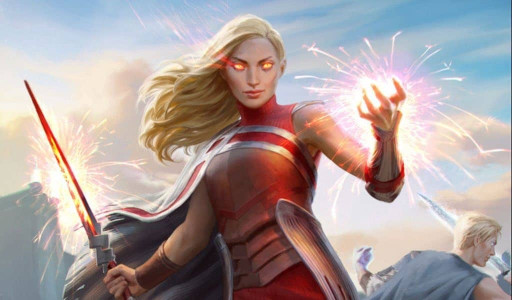
The best Bladesingers can weave between their opponents so fast they are barely even seen.
Do you want to dance in and out of the shadows, slashing at your foes before gracefully stepping away before they can retaliate? If so, the Arcane Trickster Rogue / Bladesinger Wizard is the multiclass combination for you.
2 levels in Bladesinger Wizard grants the Rogue some amazing upgrades to their base kit, as well as a little bit of spellcasting for added versatility. Bladesong gives you a great AC boost and some extra movement speed, making it that much more difficult for enemies to retaliate against you in combat.
Similar to the previous two builds, this combination benefits greatly from Booming Blade, allowing you to punish your enemies for trying to pursue you after your attacks. It also gives you access to Find Familiar, which lets you summon a spirit that can take the Help action in combat, giving you guaranteed advantage and therefore Sneak Attack on every attack you make.
With this build, you will be dancing through the battlefield, followed closely by your spectral Mage Hand, stabbing or shooting at your enemies before gracefully escaping back into the shadows. You have great damage potential with your Find Familiar spell combined with Sneak Attack, while still being almost impossible to defeat between Blade Song and Uncanny Dodge.
Why is Arcane Trickster Rogue / Bladesinger Wizard so good?
- Excellent AC and movement speed boost from Bladesong
- Find Familiar gives you almost guaranteed Sneak Attack every turn
- Booming Blade gives you extra damage and punishes enemies who pursue you
Build details:
For this build, you will need to choose one of the Elf races, as only Elves can be Bladesingers. In addition, you will need at least 13 Intelligence to multiclass into Wizard. This is not a big drawback, however, as Arcane Tricksters benefit greatly from Intelligence anyways.
To start, take one level of Rogue for its proficiencies and Sneak Attack. Then, take 2 levels of Wizard and choose the Bladesinger subclass. This will give you a jumpstart on your AC and spellcasting. Finish off with 17 more levels of Rogue and choose the Arcane Trickster subclass at Rogue 3.
Be sure to use Tasha’s optional features to customize your racial ability score increases. This is what your ability score spread should look like if you use Point Buy:
STR: 8
DEX: 16
CON: 16
INT: 14
WIS: 10
CHA: 10
Rogue (Arcane Trickster) 18 / Wizard (Bladesinger) 2
Rogue (Arcane Trickster) Levels:
- Level 1 (Rogue 1) - Class Features: Expertise (Choose 2 skills to gain double proficiency. I recommend Stealth and Arcana); Sneak Attack (1d6); Thieves’ Cant
- Level 4 (Rogue 2) - Class Feature: Cunning Action (Dash, Disengage, or Hide as Bonus Action)
- Level 5 (Rogue 3) - Class Features: Roguish Archetype (Choose Arcane Trickster); Sneak Attack (3d6). Arcane Trickster Features: Spellcasting; Mage Hand Legerdemain (Your Mage Hand becomes invisible, and gains extra actions it can use if controlled by you using a Bonus Action)
- Level 6 (Rogue 4) - Class Feature: Ability Score Improvement (Increase Dexterity by 2)
- Level 7 (Rogue 5) - Class Feature: Uncanny Dodge (Use your reaction to halve an attack’s damage against you)
- Level 8 (Rogue 6) - Class Feature: Expertise (Gain Expertise in 2 more skills. I recommend Thieves' Tools and Perception)
- Level 9 (Rogue 7) - Class Features: Evasion (Take half damage if you fail a Dexterity Saving Throw made to avoid an AOE effect, or no damage if you succeed); Sneak Attack (4d6)
- Level 10 (Rogue 8) - Class Feature: Ability Score Improvement (Increase Dexterity by 2)
- Level 11 (Rogue 9) - Class Feature: Sneak Attack (5d6). Arcane Trickster Feature: Magical Ambush (Creatures that you are hidden from gain disadvantage on saving throws against spells you cast on them)
- Level 12 (Rogue 10) - Class Feature: Ability Score Improvement (Increase Charisma or Constitution by 2)
- Level 13 (Rogue 11) - Class Features: Reliable Talent (Cannot roll lower than 10 on ability checks that you are proficient in); Sneak Attack (6d6)
- Level 14 (Rogue 12) - Ability Score Improvement (Increase Intelligenceor Constitution by 2, or choose a Feat)
- Level 15 (Rogue 13) - Class Feature: Sneak Attack (7d6). Arcane Trickster Feature: Versatile Trickster (Use your Bonus Action to instruct your Mage Hand to distract creatures, giving you advantage on attacks against them)
- Level 16 (Rogue 14) - Class Feature: Blindsense (Locate any Invisible creature within 10 feet)
- Level 17 (Rogue 15) - Class Features: Slippery Mind (Gain Proficiency in Wisdom Saving Throws); Sneak Attack (8d6)
- Level 18 (Rogue 16) - Class Feature: Ability Score Improvement (Increase Intelligence or Constitution by 2, or choose a Feat)
- Level 19 (Rogue 17) - Class Feature: Sneak Attack (9d6). Arcane Trickster Feature: Spell Thief (When you are targeted by a spell, you can use your reaction to steal that spell for 8 hours, giving you the ability to cast it and removing the other creature’s ability to until those 8 hours pass)
- Level 20 (Rogue 18) - Class Feature: Elusive (Enemy attacks cannot gain advantage against you)
Wizard (Bladesinger) Levels:
- Level 2 (Wizard 1) - Class Features: Spellcasting; Arcane Recovery (Recover a number of spell slots equal to half your Wizard level rounded up when you take a Short Rest)
- Level 3 (Wizard 2) - Class Features: Arcane Tradition (Choose Bladesinging). Bladesinging Features: Training in War and Song (Gain proficiencies in Performance, Light Armor, and one weapon of your choice); Bladesong (For one minute, gain certain benefits in combat a number of times equal to your proficiency bonus)
2. Assassin Rogue / Gloom Stalker Ranger
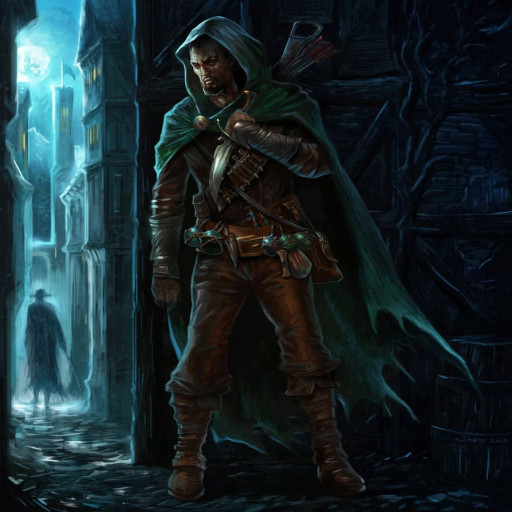
Your enemy can't fight back if they can't see you, right?
With this build, you will be the ultimate umbral hunter. Assassinate your foes with dreadful accuracy, and rain down arrows before they even have the chance to react.
This is one of the most powerful Rogue multiclass builds.Taking 5 levels in Ranger grants you Extra Attack, giving you twice as many opportunities to trigger Sneak Attack. The Gloom Stalker’s emphasis on the first turn of combat and granting benefits related to it pairs perfectly with the Assassin, allowing you to dish out absolutely insane single-target damage in a single turn, before your enemies can do anything in return.
Taking levels of Ranger also grants you access to some rudimentary magic, giving you more options in combat and some extra damage.
This build is perfect for anyone who wants to strike down their enemies from afar, often without ever being seen. It lends itself well to ranged weaponry, allowing you to stay safe and out of danger.
Why is Assassin Rogue / Gloomstalker Ranger so good?
- Some of the best single-target damage potential in the game
- Added versatility from the Ranger’s spells
- Low chance of dying, since you will likely be hidden in most combat encounters
Build details:
This build can go in two directions. The one I recommend and what I outline below is to take 5 levels of Ranger, 3 levels of Rogue, and then finish off with 12 more levels of Ranger. This will get you the Ranger’s excellent weapon and armor proficiencies, and speedrun you to getting Extra Attack before dipping into Rogue for Cunning Action, Sneak Attack, and Assassinate.
The other option is to take 5 levels of Ranger and then 15 levels of Rogue. This option will get you more Sneak Attack damage and some extra Expertise options. However, it sacrifices much of the Ranger’s spellcasting ability and durability. Additionally, many of the Assassin’s subclass features are pretty bad, with Assassinate being the only one really worth your while. No matter which option you choose, be sure to use Tasha’s optional class features to replace all of the abysmal class features the Ranger gets in their first 10 or so levels.
With this build, Wisdom and Dexterity are your most important ability scores. Be sure to use Tasha’s optional features to replace your racial ability score increases. If you use Point Buy, your ability score spread should look like this:
STR: 8
CON: 16
DEX: 16
INT: 8
WIS: 16
CHA: 8
Rogue (Assassin) 3 / Ranger (Gloom Stalker) 17
Rogue (Assassin) Levels:
- Level 6 (Rogue 1) - Class Features: Expertise (Choose 2 skills to gain double proficiency. I recommend Stealth and Persuasion); Sneak Attack (1d6); Thieves’ Cant
- Level 7 (Rogue 2) - Class Feature: Cunning Action (Dash, Disengage, or Hide as Bonus Action)
- Level 8 (Rogue 3) - Class Features: Roguish Archetype (Choose Assassin); Sneak Attack (3d6). Assassin Features: Bonus Proficiencies (Gain proficiency with the Disguise Kit and Poisoner’s Kit); Assassinate (Gain advantage on creatures that have not taken their first turn in combat and automatic critical hits against surprised creatures)
Ranger (Gloomstalker) Levels:
- Level 1 (Ranger 1) - Class Features: Deft Explorer (Canny: Gain Expertise in one of your proficiencies and learn 2 more languages); Favored Foe (Mark a foe when you hit it with a weapon attack to deal an extra 1d4 damage against it for 1 minute)
- Level 2 (Ranger 2) - Class Features: Spellcasting; Fighting Style (Choose Archery)
- Level 3 (Ranger 3) - Class Features: Ranger Archetype (Choose Gloom Stalker); Primal Awareness (Gain extra spells at certain levels that you can cast once per long rest without using a spell slot). Gloom Stalker Features: Gloom Stalker Magic (Gain extra spells at certain levels); Dread Ambusher (Gain an extra 10 feet of movement and an extra attack that deals 1d8 extra damage on the first turn of combat); Umbral Sight (Gain Darkvision and become invisible when in darkness to any creature relying on Darkvision to see you)
- Level 4 (Ranger 4) - Class Feature: Ability Score Improvement (Increase Dexterity by 2)
- Level 5 (Ranger 5) - Class Feature: Extra Attack (Make 2 attacks on your turn)
- Level 9 (Ranger 6) - Class Features: Deft Explorer (Rover: Your walking speed increases by 5 feet and you gain a swimming and climbing speed equal to your walking speed); Favored Foe (1d6)
- Level 10 (Ranger 7) - Gloom Stalker Feature: Iron Mind (Gain proficiency in Wisdom Saving Throws)
- Level 11 (Ranger 8) - Class Features: Ability Score Improvement (Increase Dexterity by 2); Land’s Stride (Move through difficult terrain without a movement penalty and gain advantage on saving throws against magical plants created to impede movement)
- Level 12 (Ranger 9) - Nothing
- Level 13 (Ranger 10) - Class Features: Deft Explorer (Tireless: Give yourself a number of temporary hit points equal to 1d8 + your Wisdom modifier and lose 1 exhaustion level after a short rest); Nature’s Veil (Magically become Invisible for 1 minute)
- Level 14 (Ranger 11) - Gloom Stalker Feature: Stalker’s Flurry (When you miss with a weapon attack, you can make another as part of the same action)
- Level 15 (Ranger 12) - Class Feature: Ability Score Improvement (Increase Wisdom or Constitution by 2)
- Level 16 (Ranger 13) - Nothing
- Level 17 (Ranger 14) - Class Features: Favored Foe (1d8); Vanish (Use the Hide action as a Bonus Action)
- Level 18 (Ranger 15) - Gloom Stalker Feature: Shadowy Dodge (Use your reaction to impose disadvantage on an attack against you)
- Level 19 (Ranger 16) - Class Feature: Ability Score Improvement (Increase Wisdom or Constitution (whichever you did not increase last time) by 2)
- Level 20 (Ranger 17) - Nothing
1. Swashbuckler Rogue / Oath of Vengeance Paladin
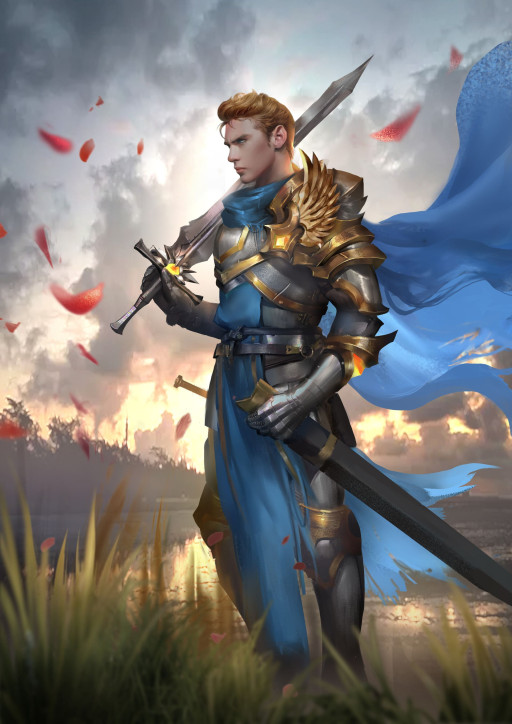
A warrior of light, standing against darkness to save those who cannot do so themselves.
Wading through war-torn battlefields and vaporizing unworthy foes with their Divine Smite, this build is for those of you who want the tankiest, strongest, and most beguiling Rogue character that D&D has to offer.
Combining Sneak Attack and Divine Smite is the bread and butter of this build. Between those two, this build has some of the best burst-damage potential in the entire game. Mix that with the Paladin’s tankiness and spellcasting, the Rogue’s maneuverability, and the Swashbuckler’s almost guaranteed Sneak Attack with good positioning, and you have easily the most powerful Rogue multiclass build available.
This build strays a little bit from the Rogue’s traditionally sneaky playstyle, instead opting for a battlefield powerhouse, outfitted in heavy armor. If you like the idea of playing the tanky defender while still dishing out massive damage, this build is for you. Additionally, its emphasis on Charisma makes it a powerful and enjoyable roleplayer.
Why is Swashbuckler Rogue / Oath of Vengeance Paladin so good?
- Insane damage potential with the right positioning
- Some versatility from the Paladin’s spellcasting
- Tanky armor and high HP
- Great face
Build details:
To start with, you should take 5 levels in Paladin. At 3rd level, choose the Oath of Vengeance subclass. This will get you your heavy armor and Divine Smite, as well as Extra Attack and an Ability Score Improvement. Next, go for 4 levels in Rogue, taking the Swashbuckler subclass at level 3. This will give you Sneak Attack, Expertise, Cunning Action, and another Ability Score Improvement. Finally, take another 2 levels in Paladin and finish off with 10 more levels of Rogue.
Because you need to have 13 Dexterity, Strength, and Charisma to meet the multiclass prerequisites for this class, the High-Elf race is essential to ensure you have good ability scores while still meeting these requirements. For this build, you will be wielding a rapier, a shield, and heavy armor. This means your primary ability score will be Strength, which allows you to use both heavy armor and a rapier and still get Sneak Attack since rapiers are finesse weapons. If you use point buy, your ability score spread should look like this:
STR: 16
DEX: 13
CON: 16
INT: 8
WIS: 8
CHA: 14
Rogue (Swashbuckler) 13 / Paladin (Oath of Vengeance) 7
Rogue (Swashbuckler) Levels:
- Level 6 (Rogue 1) - Class Features: Expertise (Choose 2 skills to gain double proficiency); Sneak Attack (1d6); Thieves’ Cant
- Level 7 (Rogue 2) - Class Feature: Cunning Action (Dash, Disengage, or Hide as Bonus Action)
- Level 8 (Rogue 3) - Class Features: Roguish Archetype (Choose Swashbuckler); Sneak Attack (3d6). Swashbuckler Features: Fancy Footwork (Don’t take opportunity attacks from a creature you hit with an attack); Rakish Audacity (Bonus to Initiative equal to Charisma modifier & new way to use Sneak Attack)
- Level 9 (Rogue 4) - Class Feature: Ability Score Improvement (Increase Strength by 2)
- Level 12 (Rogue 5) - Class Feature: Uncanny Dodge (Use your reaction to halve an attack’s damage against you)
- Level 13 (Rogue 6) - Class Feature: Expertise (Gain Expertise in 2 more skills)
- Level 14 (Rogue 7) - Class Features: Evasion (Take half damage if you fail a Dexterity Saving Throw made to avoid an AOE effect, or no damage if you succeed); Sneak Attack (4d6)
- Level 15 (Rogue 8) - Class Feature: Ability Score Improvement (Increase Constitution or Charisma by 2)
- Level 16 (Rogue 9) - Class Feature: Sneak Attack (5d6). Swashbuckler Feature: Panache (Charm enemies on the battlefield with a Persuasion check, inflicting debuffs on them)
- Level 17 (Rogue 10) - Class Feature: Ability Score Improvement (Increase Charisma or Constitution by 2)
- Level 18 (Rogue 11) - Class Features: Reliable Talent (Cannot roll lower than 10 on ability checks that you are proficient in); Sneak Attack (6d6)
- Level 19 (Rogue 12) - Ability Score Improvement (Increase Charisma or Constitution by 2, or choose a Feat)
- Level 20 (Rogue 13) - Class Feature: Sneak Attack (7d6). Swashbuckler Feature: Elegant Maneuver (Use a Bonus Action to gain Advantage on Acrobatics or Athletics checks)
Paladin (Oath of Vengeance) Levels:
- Level 1 (Paladin 1) - Class Features: Divine Sense (Sense certain types of creatures within 60 feet of you); Lay on Hands (Gain a pool of HP equal to your Paladin level x 5 that you can give to yourself or other creatures to heal them)
- Level 2 (Paladin 2) - Class Features: Spellcasting; Fighting Style (Choose Dueling); Divine Smite (Expend Spell Slots to deal extra damage to creatures you hit with an attack)
- Level 3 (Paladin 3) - Class Features: Divine Health (Become immune to disease); Sacred Oath (Choose Oath of Vengeance). Oath of Vengeance Features: Channel Divinity (Gain two Channel Divinity options that you can use to gain benefits in combat); Oath Spells (Gain extra spells at certain levels)
- Level 4 (Paladin 4) - Class Feature: Ability Score Improvement (Increase Strength)
- Level 5 (Paladin 5) - Class Feature: Extra Attack (Make 2 attacks on your turn)
- Level 10 (Paladin 6) - Class Feature: Aura of Protection (Give creatures within 10 feet of you a bonus to their saving throws equal to your Charisma modifier)
- Level 11 (Paladin 7) - Oath of Vengeance Feature: Relentless Avenger (Move half your speed when you hit a creature with an opportunity attack)

